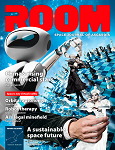Known as the father of SETI science, radio astronomer Frank Drake created the Drake Equation to stimulate dialogue about the search for extraterrestrial intelligence. Here, space anthropologist and author Savannah Mandel asks if it is time to look again at the famous seven-part equation taking into consideration the social implications of life existing on other planets.
In a collection of fantastical stories about a far-away land full of peculiar and mystical beings, children’s author L Frank Baum wrote about a land called Oz which was ruled by a powerful and just fairy-child known as Ozma. In 1960, inspired by Baum’s work, scientists working with Project Ozma used the National Radio Astronomy Observatory’s 85-foot radio telescope to detect interstellar radio waves.
This groundbreaking SETI (Search for Extraterrestrial Intelligence) experiment was launched by Frank Drake, who created the eponymous Drake Equation in 1961. The radio astronomer would go on to play an important role in developing the 1974 Arecibo Message, the most powerful radio broadcast ever deliberately beamed into space.














